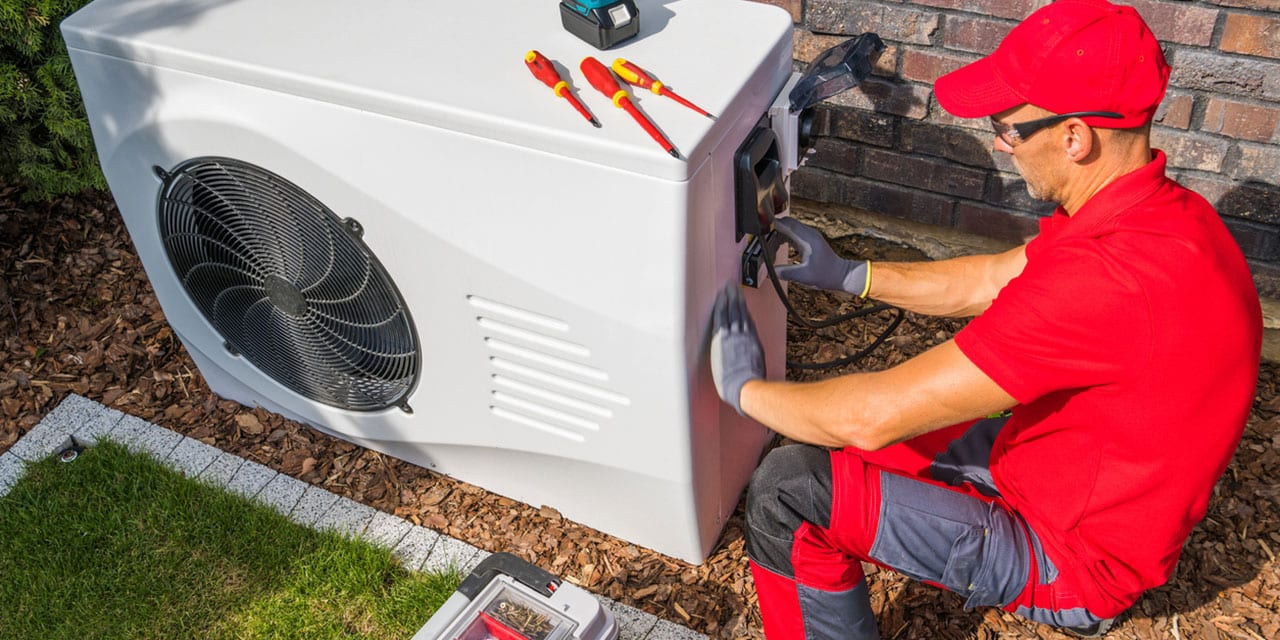Subscribe to Zero-Sum Pfear & Loathing



by | Aug 26, 2023
Electric-powered heat pumps, once an obscure appliance, are being hyped as the key to decarbonizing homes and buildings in California. Regulators in Sacramento and in the Bay Area are phasing out gas-furnace sales, and two upscale communities now require heat-pump retrofits when air conditioners wear out. But as with so many things “green,” advocates underestimate the true costs and burdens of these policies, while ignoring their adverse health and climate consequences.
In summer, a heat pump works like an air conditioner, using refrigerant to transfer heat outdoors for cooling. In winter, it can run in reverse, moving heat into a home. Activists insist that trading gas furnaces for heat pumps will cut costs and improve health while protecting the climate.
The cost benefits are as yet illusory. In late 2022, Bay Area bureaucrats effectively banned gas heaters, arguing that heat pumps would cost only $8,030 per installation, a figure well below the ranges estimated by their own consultants. Since 2021, heat-pump installations have averaged $18,872 statewide and more than $22,000 in greater San Francisco. Skyrocketing California electricity rates steadily erode potential savings from all-electric heating.
Unsurprisingly, lavish heat-pump subsidies overwhelmingly favor richer households. Since 2021, less than 8 percent of heat pumps have been installed in disadvantaged communities. And according to UCLA researchers, struggling lower-income households could face “tenant displacement” as landlords raise rents to cover heat-pump expenses.
Though regulators and climate advocates obsess about heat waves, the real home and building health challenge in California, and in the rest of the world, is preventing exposure to cold. The World Health Organization found that indoor temperatures below about 65 degrees are far more likely to cause respiratory, cardiovascular, and other illness than warmer conditions. From 2000 to 2019, extreme cold caused an average of 4.6 million excess deaths per year, nearly ten times more than the number of excess deaths from heat.
In the most heavily populated parts of California, including the Bay Area, days when indoor heat is necessary to avoid harmfully cold indoor temperatures are more than 30 times more likely to occur than cooling days. On average, including in very warm desert locations, state residents need indoor heat three times more frequently than air conditioning.
Notwithstanding pervasive claims to the contrary, heat pumps are less effective and have to work much harder to heat a room when temperatures fall. That’s why Canada warns to keep a “boiler up and running” in addition to a heat pump during cold spells, and even heat-pump enthusiasts recommend using hybrid gas and electric heat when temperatures fall.
California’s forced march toward universal heat-pump use and gas bans means that a growing number of residents, in a rapidly aging state, will be unable to keep indoor temperatures at safe levels when needed. The inevitable health impacts, including more illness and death, are never considered by climate advocates and regulators.
Nor is it clear that widespread heat-pump deployment will help reduce global warming, even as advocates claim that they will cut ozone and nitrous oxide emissions. The technology uses refrigerants, “the worst greenhouse gases you never heard of,” causing thousands of times more climate damage per pound than carbon dioxide. Refrigerant leakage already accounts for 4 percent of global greenhouse gas emissions, twice as much as from aviation, and is the fastest-growing source of all California greenhouse gas emissions. The loss of just a few pounds of refrigerant from a single home can produce as much global warming as driving a gas car for a year.
California’s climate policies will dramatically increase the need to build, install, and replace conventional heating and cooling with millions of new heat pumps, each containing several pounds of one of the most virulent sources of climate damage ever invented. Just under 30 percent of all California households, and more than 50 percent in the Bay Area, don’t have air conditioning, the lowest deployment rate in the country. Gas bans and heat-pump mandates force California households that don’t have air conditioners to use refrigerants for heating. This strategy unquestionably increases refrigerant-leakage risks and may cause more climate harm than it avoids.
Advocates, of course, assert that climate-friendly alternatives like butane or ammonia will soon replace existing refrigerants, but these potential options have problems of their own. Each is much more corrosive and flammable, and heat pumps using such alternatives will need to be redesigned for safety. Larger, heavier equipment will likely increase manufacturing energy and material consumption and acquisition costs, none of which can presently be quantified with any certainty.
California’s heat-pump infatuation is another example of a thoughtlessly regressive, not-so-green initiative. The new mandates favor the wealthy, increase housing costs, displace lower-income renters, and force aging households to rely on a heating technology that becomes less effective when needed most. Even worse, they are seeding the state with millions of new leakage sources for powerful greenhouse gases to reach the atmosphere. It is astounding that state climate elites insist on causing such economic, social, health, and climate harm in exchange for minuscule—if any—benefits.